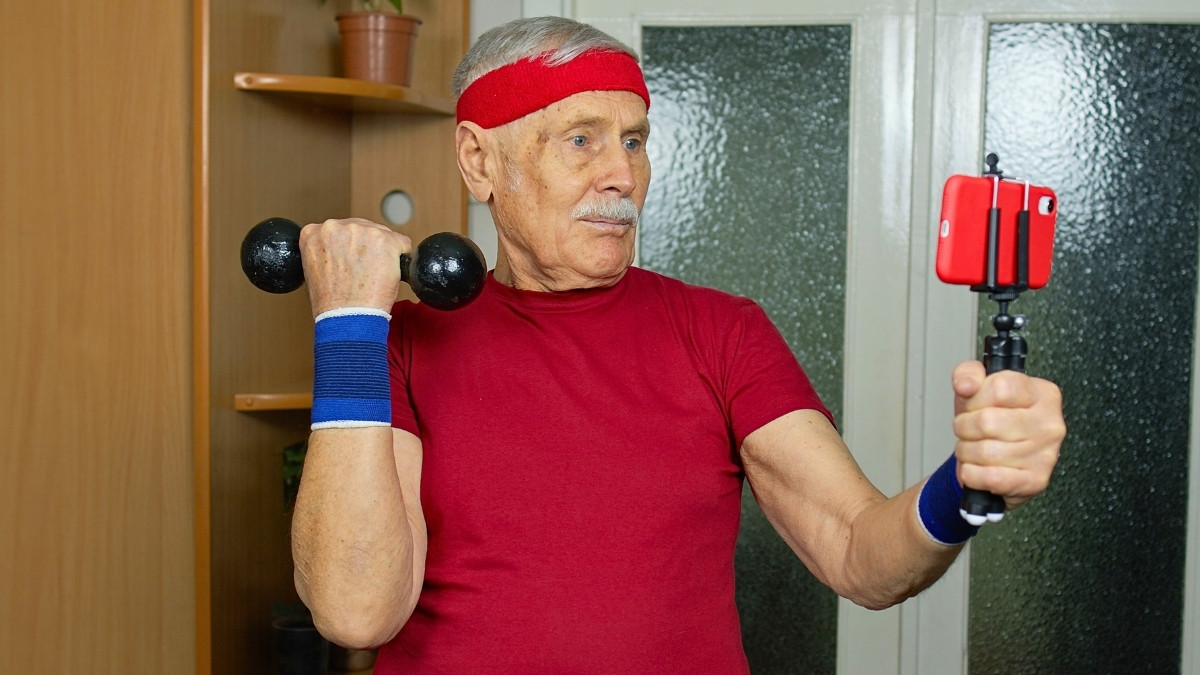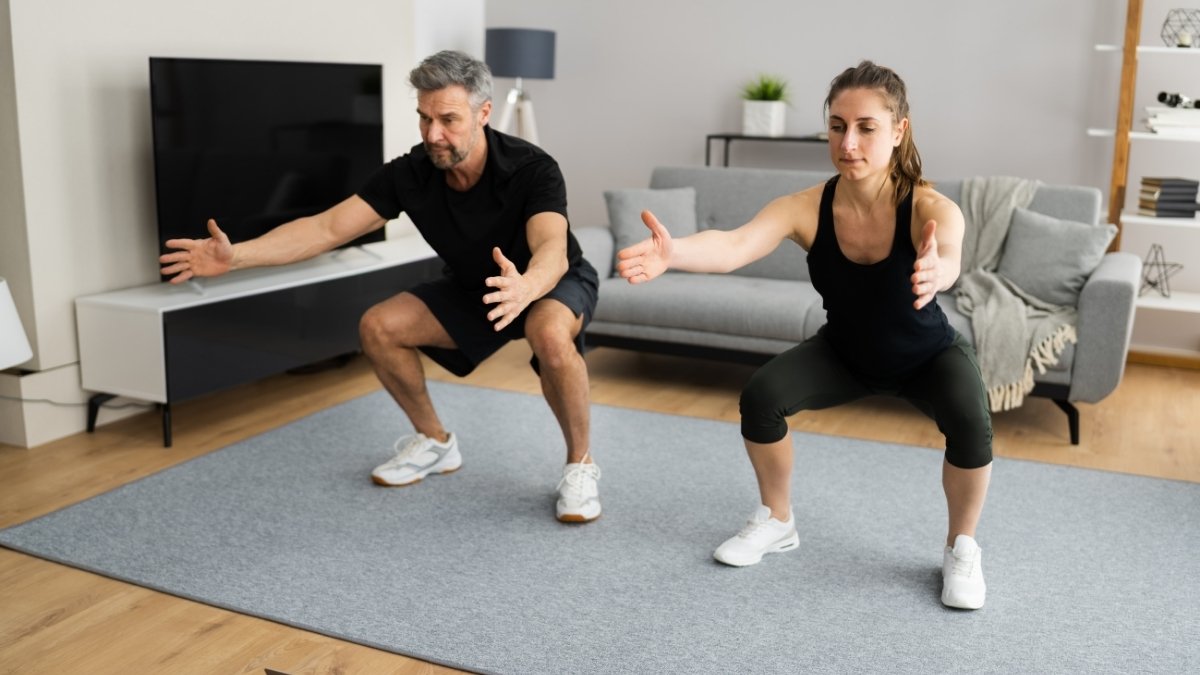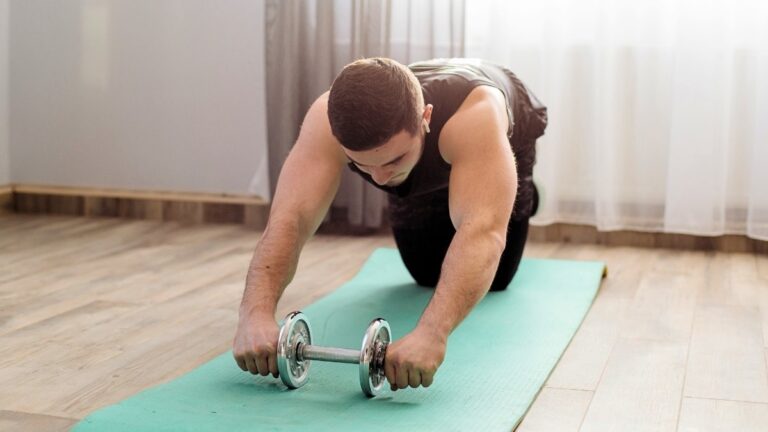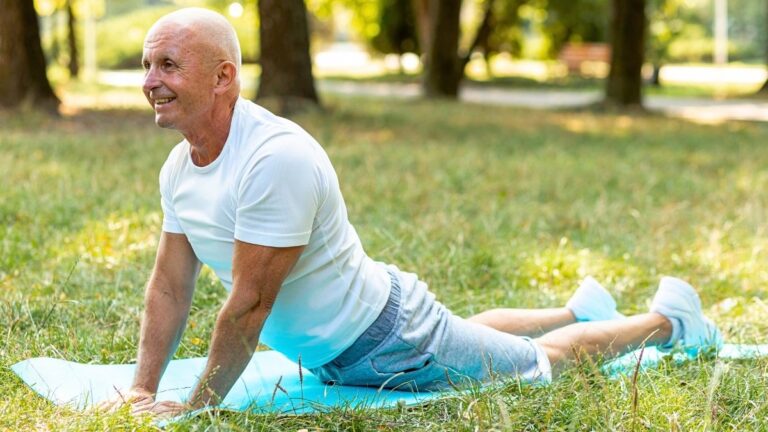They Said He Was “Too Old to Train” — His 3-Move Routine Proved Them Wrong

When doctors told Robert he was too old to start lifting weights at 72, he proved them spectacularly wrong—and science backed him up.
Maybe you’ve heard the same thing. You’re too old. It’s too risky. You’ll hurt yourself. So you’ve accepted that struggling with stairs is just part of aging. That groceries will keep getting heavier. That getting out of a chair requires using your hands.
But strength training for older adults isn’t dangerous. Weakness is dangerous. Not being able to catch yourself when you trip—that’s the real risk.
Here’s what you’ll learn in the next five minutes: the exact three exercises for seniors that build real strength. No gym membership. No complex equipment. No confusion about what to do next.
Science proves building muscle after 60 works. Older adults gain strength at nearly the same rate as younger people. You can reverse years of muscle loss in months, not years.

This routine takes 15 minutes, twice a week. That’s all. By the end of this article, you’ll know exactly what to do, how to do it safely, and why it works.
The Science Behind “Too Old to Train” (And Why It’s Wrong)
Your body does lose muscle as you age. That’s real.
After 30, you lose 3-5% of muscle mass every ten years. After 60, it speeds up to 8% per decade. Doctors call this sarcopenia. It sounds scary. But here’s what most people don’t know: you can reverse it.

Scientists have studied strength training in older adults for 30 years. The results are clear. Older people gain strength just like younger people do—about 2.5% stronger with each workout session. Some people improve even faster, up to 8.5% per session.
Right now, about 30% of adults over 70 struggle with simple tasks. Walking. Getting out of chairs. Climbing stairs. This happens because muscles shrink. But it doesn’t have to be this way.
People who lift weights twice a week have 46% lower odds of dying from any cause. That’s not a small number. That’s huge.
Joan MacDonald started strength training in her 70s. She couldn’t walk up stairs without pain. Today she’s stronger than many people half her age. She’s not special. She just started.

People in their 80s and 90s have successfully built muscle through strength training. The CDC confirms this. Your age isn’t the problem. Believing the myth is the problem.
What Makes These 3 Moves Different (The Foundation Formula)
Most workout plans fail because they’re too complicated. Twenty exercises. Special equipment. Gym membership required.
These three moves work differently. They’re compound exercises—meaning each one works multiple muscles at once. You get more results in less time. No gym needed.
Here’s what makes them special: they copy real life.

Squats teach your body to get in and out of cars, chairs, and toilets without help. Every time you stand up, you’re doing a squat. This exercise just makes that movement stronger. You practice what you actually need.
Wall push-ups build the strength to push grocery carts, open heavy doors, and catch yourself if you trip. That’s functional fitness for seniors—exercise that helps your daily life, not just your mirror.
Bridges strengthen your glutes and deep abdominals. These muscles prevent falls. They keep you stable when you walk on uneven ground. They help you recover your balance when you stumble.
The 3-Move Routine That Proves Them Wrong
This is your complete senior workout routine. Three exercises. No equipment. Real results.
The CDC recommends strength training at least twice a week on non-consecutive days. Monday and Thursday. Tuesday and Friday. Pick two days and stick with them. Your muscles need rest between workouts to grow stronger.

Here’s your plan: three sets of 10-15 reps for each exercise. If that sounds like too much, start with one set of 5 reps. You can always add more later.
Move #1: The Chair Squat (Sit-to-Stand)
This exercise builds your legs, hips, core, and balance all at once. It’s the most important movement for staying independent.
How to do it:
Stand in front of a sturdy chair. Your feet should be hip-width apart. Cross your arms over your chest or hold them straight out in front of you.

Slowly lower yourself down until you barely touch the chair. Don’t plop down. Hover just above the seat for one second. Then stand back up. You should feel this in your thighs and butt.
Keep your knees over your toes. Don’t let them cave inward. Look straight ahead, not down at your feet. Your chest stays up.
Common mistakes: Leaning too far forward. Letting your knees go past your toes. Standing up too fast. Go slow. Control matters more than speed.
How to progress: Week 1-2, actually sit down fully between reps. Week 3-4, just touch the chair and stand back up. Week 5+, remove the chair and do bodyweight squats. Hold onto a counter if you need balance support.
This exercise teaches your body to get in and out of cars without struggling. Every rep makes daily life easier.
Move #2: Wall Push-Ups
Your upper body needs strength too. Opening jars. Pushing shopping carts. Catching yourself if you trip. Wall push-ups build all of this without getting on the floor.
How to do it:
Stand 3-4 feet from a wall. Place your hands flat on the wall at shoulder height and shoulder-width apart. Your body should form a straight line from head to heels.

Bend your elbows and lean toward the wall. Your nose should almost touch it. Push back to the starting position. You should feel this in your chest, shoulders, and the back of your arms.
Keep your core tight. Don’t let your hips sag or stick out. Your whole body moves as one unit. Breathe in as you lower. Breathe out as you push.
Common mistakes: Standing too close to the wall makes it too easy. Letting your elbows flare out to the sides. Keep them at a 45-degree angle to your body.
How to progress: Wall push-ups are the starting point for these strength exercises for beginners. When you can do 15 reps easily, move to a countertop or sturdy table. Lower height means more challenge. Eventually you can do them on your knees on the floor, then full push-ups.
Move #3: Glute Bridges
This exercise prevents falls. It strengthens the entire back of your body—your glutes, hamstrings, and lower back.
How to do it:
Lie on your back on a mat or carpet. Bend your knees. Place your feet flat on the floor, hip-width apart. Your feet should be close enough that you can almost touch your heels with your fingers.

Squeeze your butt muscles. Lift your hips up until your body forms a straight line from shoulders to knees. Hold for two seconds at the top. Lower back down slowly. You should feel this in your butt and the back of your thighs.
Don’t arch your back. Don’t lift too high. Think about pushing through your heels, not your toes.
Common mistakes: Lifting too fast. Not squeezing your glutes at the top. Letting your knees fall inward or outward. Keep them aligned with your hips.
How to progress: Start with bodyweight only. When that feels easy, place a light dumbbell on your hips. Five pounds is plenty to start. You can also try single-leg bridges later—these are much harder.
Bridges make walking steadier. They help you recover your balance on uneven ground. They’re essential exercises for seniors over 60 who want to stay mobile.
Beyond the Basics: Progression and Long-Term Results
You’ve mastered the three moves. Now what?
Building muscle after 60 doesn’t stop at bodyweight exercises. Progressive overload for seniors means gradually adding more challenge as you get stronger.

Here’s your 3-month timeline:
Month 1: Master form with bodyweight only. Focus on control and breathing. Month 2: Add resistance bands. They’re cheap, safe, and travel anywhere. Month 3: Switch to light dumbbells. Start with 3-5 pounds.
One year of consistent training protects your strength for up to four years later. That’s how powerful this is. You’re not just building muscle for today. You’re investing in your future independence.
Research shows something surprising. Heavy weights (80-85% of your max effort) work better than light weights for older adults. But “heavy” is relative. What feels challenging to you is heavy enough. If you can do 15 reps easily, it’s time to add weight.

The benefits go beyond muscles. Strength training improves your brain function and memory. It helps you sleep better. It reduces depression. Your metabolism increases up to 15%—you burn more calories even while resting.
Common Mistakes to Avoid (And How to Fix Them)
Safe strength training means knowing when to push and when to back off.

Mistake #1: Doing too much on day one. You feel excited. You do 50 squats. The next day you can’t walk. Then you quit. Start small. One set of 5 reps is enough for week one.
Mistake #2: Chasing numbers instead of form. Sloppy reps don’t count. Five perfect squats beat twenty wobbly ones. Form always comes first. Speed and weight come later.
Mistake #3: Working out every day. Your muscles don’t grow during workouts. They grow during rest. You need at least one full day between strength sessions. This is avoiding injury while exercising 101. Monday and Thursday works. Tuesday and Friday works. Every day doesn’t work.
Mistake #4: Eating like a bird. Building muscle after 60 requires protein. Aim for 25-30 grams per meal. Greek yogurt. Eggs. Chicken. Beans. Your body can’t build what it doesn’t have fuel for.
Mistake #5: Comparing yourself to others. Your neighbor does 20 push-ups. You do 5. So what? You’re stronger than you were last week. That’s what matters.
Red flags to stop immediately: Sharp pain (not soreness). Dizziness. Chest pain. Shortness of breath that doesn’t improve.
Muscle soreness 24-48 hours later is normal. That’s good pain. Sharp pain during the exercise is bad pain. Learn the difference.
Final Thoughts:
People have started strength training in their 70s, 80s, and even 90s. The CDC confirms this. Your age isn’t the barrier. Fear is.

These three moves—chair squats, wall push-ups, and glute bridges—give you everything you need. They build the foundation for lifelong strength. No fancy equipment. No complicated routines. Just results.
Even one workout gives you immediate benefits. Better sleep that night. Lower blood pressure within hours. And over time, the gains multiply: sharper brain function, stronger bones, longer independence.
This isn’t about looking like a bodybuilder. It’s about carrying your own groceries. Playing with your grandkids. Traveling without worry. Living on your terms.
Here’s what you do right now: Stand up. Do 5 chair squats. That’s it. You’ve started.

Tomorrow, add 5 wall push-ups. The day after, do 5 bridges. By next week, you’ll have your complete routine. In three months, you’ll wonder why you waited so long.
Remember: strength training for older adults isn’t about proving anything to anyone else. It’s about proving something to yourself—that you’re stronger than they said, more capable than you thought, and far from finished.






